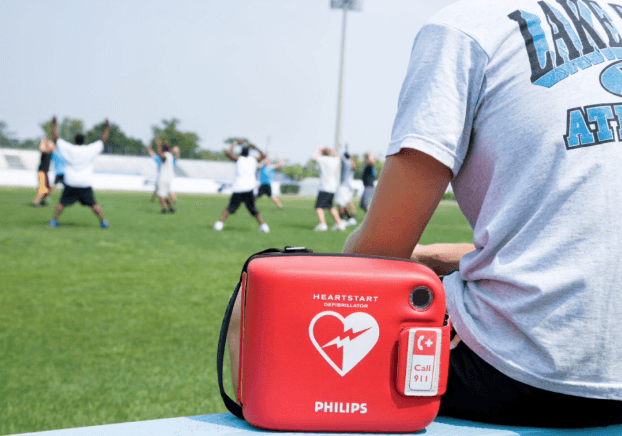
When you're walking through a shopping mall, airport, or school, you may have noticed a bright red or yellow box on the wall labeled “AED.” But have you ever stopped to ask: what is an AED, and why is it there?
In life or death situations, an Automated External Defibrillator (AED) can make the difference between survival and tragedy. These portable devices are designed to be used by anyone, not just trained professionals, to restart a heart that has suddenly stopped. In this article, we break down what an AED does, who can use one, and how you can act confidently if you’re ever faced with a cardiac emergency.
What Is an AED?
An Automated External Defibrillator (AED) is a compact, battery-powered medical device used to treat a person experiencing sudden cardiac arrest (SCA). SCA occurs when the heart’s electrical system fails, causing the heart to stop beating effectively. Without immediate intervention, this leads to a rapid loss of consciousness, and if untreated causes death within minutes.
AEDs help restart the heart during a sudden cardiac arrest. They work by analyzing the heart’s rhythm through sticky pads placed on the chest. If the device detects a dangerous rhythm like ventricular fibrillation (VF) or pulseless ventricular tachycardia (VT) it delivers a controlled electric shock .This shock can reset the heart’s electrical activity, restore a normal rhythm, and potentially save the person’s life.
AED vs. Heart Attack: What’s the Difference?
Many people confuse a heart attack with sudden cardiac arrest, but they are not the same. A heart attack is a circulation problem, a blockage in the coronary arteries while SCA is an electrical malfunction of the heart.
An AED does not treat a heart attack, but it can revive a heart that has stopped beating due to a cardiac arrhythmia. That’s why every minute counts. The chance of survival drops 10% per minute without defibrillation.
Who Can Use an AED?
Anyone. Yes, anyone.
AEDs are intentionally designed to be used by laypeople with no medical training. Once the electrode pads are applied, the device talks you through each step with clear voice prompts. It will only deliver a shock if a life-threatening rhythm is detected, so there’s no risk of accidentally shocking someone who doesn’t need it.
Whether you’re a student, gym-goer, teacher, or bystander, you are legally protected when using an AED in an emergency thanks to Good Samaritan laws enacted in all 50 U.S. states.
Where Are AEDs Found?
AEDs are now commonly placed in:
- Airports and train stations
- Shopping malls
- Schools and universities
- Sports arenas and gyms
- Offices and hotels
- Government buildings
The goal is simple: put life-saving tools in places where sudden cardiac arrest is most likely to occur.
Should I Get AED Training?
While AEDs are designed to be used without prior experience, taking a basic CPR/AED course is one of the most empowering and responsible actions you can take.
What If I Make a Mistake?
This is a common fear but here’s the truth:
- You can’t hurt someone with an AED if their heart is beating normally.
- AEDs will not deliver a shock unless it's truly necessary.
- The real mistake is doing nothing.
Good Samaritan laws ensure that if you act in good faith during an emergency, you’re protected from legal liability. Your actions could save a life.
At Starting Hearts, we can provide you with specific training that can make a life-saving difference.
Contact us for more information: info@startinghearts.org.
Dr. Vinita S Kulkarni is a medical doctor and a health care volunteer based in India.
